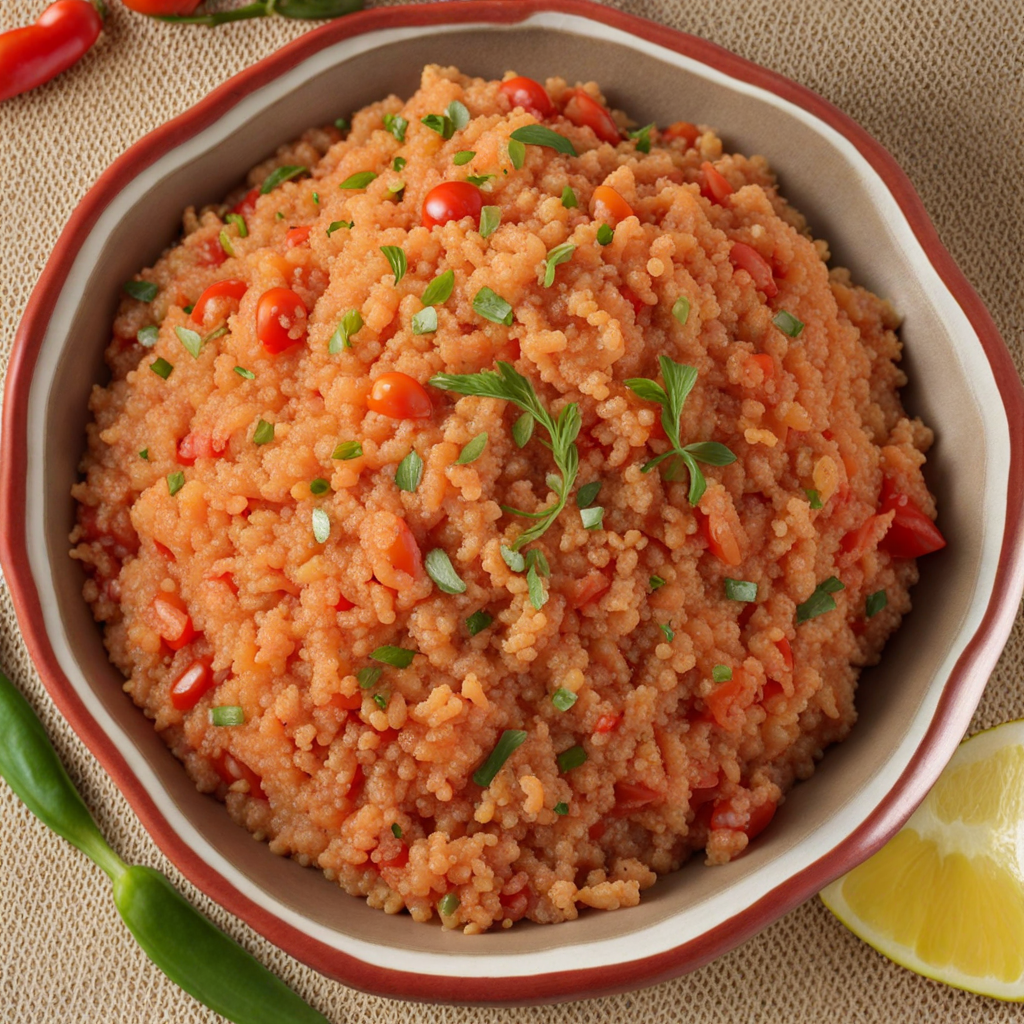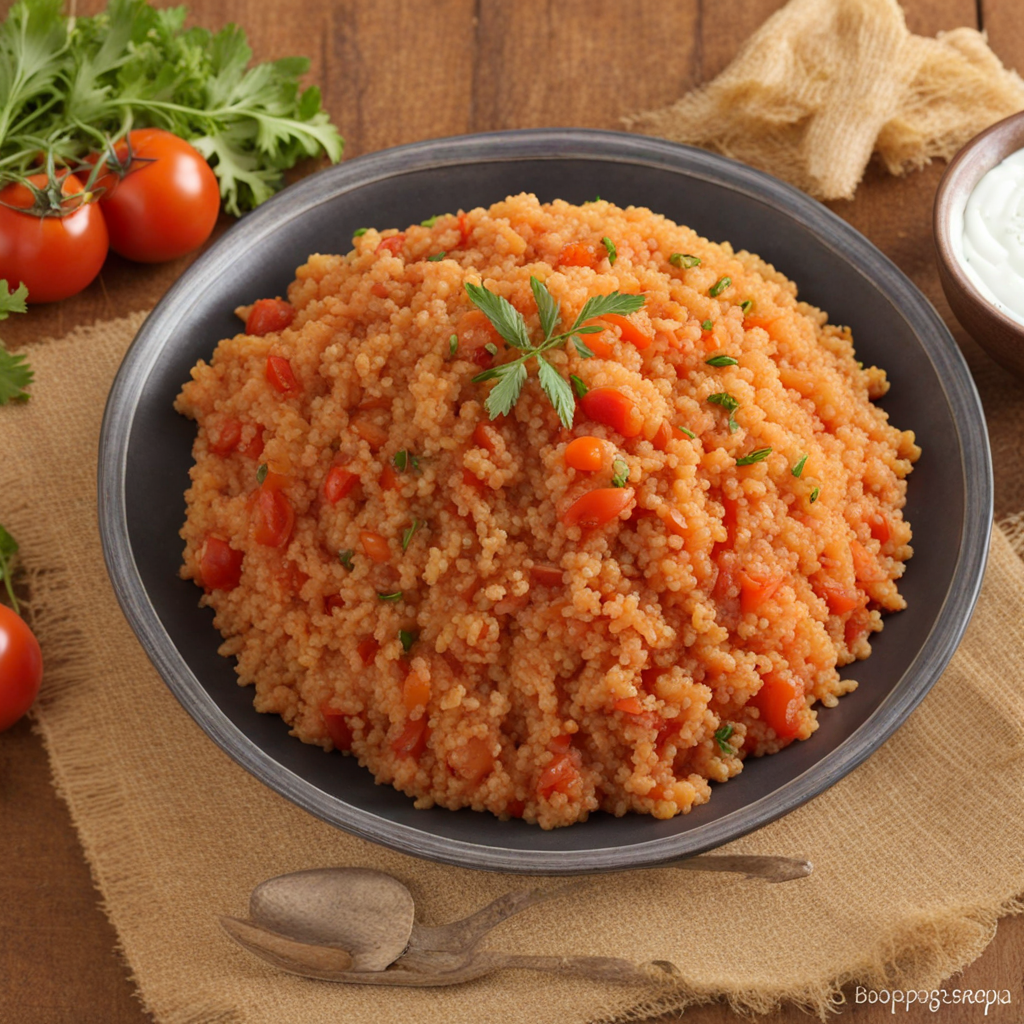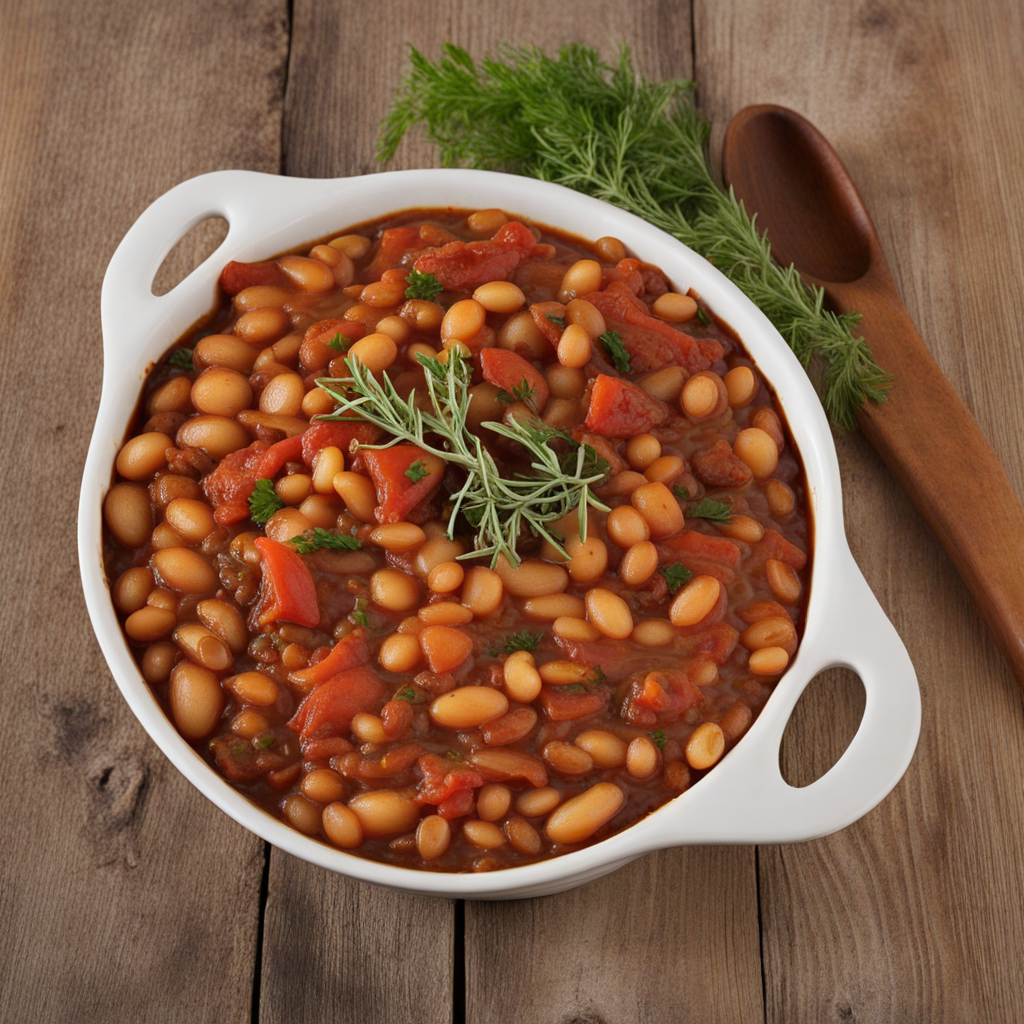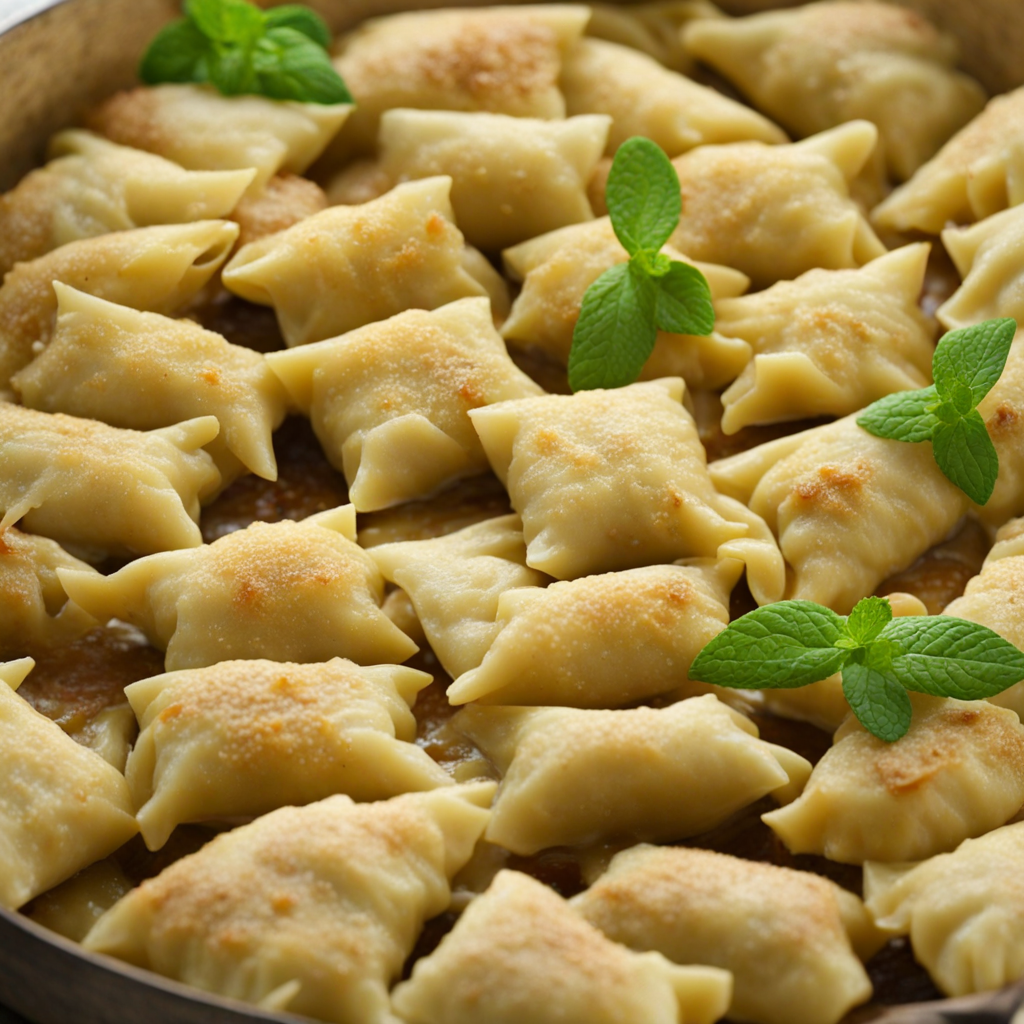Pourgouri
Pourgouri is a traditional Cypriot dish that showcases the rich culinary heritage of the island. At its core, pourgouri is made from bulgur wheat, which is finely cracked and parboiled, resulting in a nutty flavor and chewy texture that is both satisfying and versatile. This dish is often enhanced with a variety of ingredients such as herbs, spices, and vegetables, allowing for a delightful blend of flavors that can be tailored to suit diverse palates. The preparation of pourgouri is a labor of love, often passed down through generations, embodying the essence of Cypriot hospitality and home-cooked meals. In its simplest form, pourgouri can be served as a side dish, complementing grilled meats or roasted vegetables, but it can also shine as a main dish when combined with ingredients like tomatoes, onions, and bell peppers. The dish is frequently flavored with olive oil and fresh herbs such as parsley or mint, which elevate its taste and offer a refreshing balance. The result is a hearty yet light meal that captures the essence of the Mediterranean diet, infused with wholesome ingredients and a touch of tradition. Pourgouri is not just a meal; it's an experience that invites you to savor the flavors of Cyprus. Its texture, aroma, and taste work harmoniously to create a dish that feels comforting yet sophisticated. Whether enjoyed at a family gathering or served at a local taverna, pourgouri represents the vibrant culture of Cyprus and is a must-try for anyone looking to explore new culinary horizons. The dish embodies the warmth of Cypriot hospitality, making it an unforgettable addition to any dining experience.
How It Became This Dish
The History of Πουργούρι: A Culinary Gem of Cyprus Origin and Etymology Πουργούρι (Pourgouri) is a traditional Cypriot dish with roots that stretch deep into the island's rich agricultural heritage. The name "Pourgouri" derives from the Turkish word "Bulgur," which refers to cracked wheat that has been parboiled, dried, and crushed. This indicates a significant cultural exchange, as Cyprus has been shaped by a multitude of influences throughout its history, from the Byzantine Empire to the Ottoman period, and later the British colonial era. The dish is primarily made from bulgur wheat, a staple food that has been cultivated for thousands of years in the Mediterranean and the Near East. In Cyprus, the preparation of Pourgouri often involves cooking bulgur with water or broth, sometimes with the addition of vegetables, spices, and occasionally meat. The incorporation of local ingredients and techniques showcases how the dish has been adapted to Cypriot tastes and traditions over time. Cultural Significance Pourgouri is much more than just a dish; it embodies the spirit of Cypriot hospitality and communal living. Traditionally, it is served during special occasions, family gatherings, and religious festivities, often accompanying other dishes such as roasted meats, stews, or vegetable-based meals. Its versatility makes it a beloved staple in both everyday and celebratory meals. In the Cypriot culture, food plays a crucial role in social interactions and family bonds. Pourgouri, with its simple yet hearty nature, reflects the island's agricultural roots and the importance of sharing meals with loved ones. The dish is often prepared in large quantities, allowing families and friends to gather around the table, reinforcing communal ties and celebrating togetherness. Moreover, the dish is often associated with the concept of "Mise-en-place," a French culinary term that means "everything in its place." In Cyprus, this reflects the importance of preparing the necessary components ahead of time, ensuring that the meal can be enjoyed without haste. Pourgouri exemplifies this principle, as it can be made in advance and served as part of a larger feast, allowing hosts to engage more fully with their guests. Historical Development The history of Pourgouri is closely linked with the agricultural practices of Cyprus. Wheat cultivation dates back to ancient times, with evidence suggesting that it was one of the first domesticated crops in the region. The island's favorable climate for growing wheat, coupled with its strategic location as a crossroads of various civilizations, led to the development and transmission of agricultural techniques, including the processing of grains like bulgur. During the Byzantine era, the diet of Cypriots began to incorporate more diverse ingredients and cooking methods. The use of bulgur as a staple food can be traced back to this period, as it was an economical and nutritious source of sustenance for the local population. As the island transitioned to Ottoman rule in the 16th century, culinary practices were further influenced by Turkish cuisine, which introduced new spices and cooking techniques that would eventually become integral to the preparation of Pourgouri. The 20th century saw significant changes in Cyprus, including political turmoil and migration. The division of the island in 1974 had a profound effect on its culinary landscape, as communities were displaced, and traditional recipes began to evolve. Despite these challenges, Pourgouri remained a steadfast dish within Cypriot households, serving as a culinary bridge connecting generations and communities. In contemporary Cyprus, the resurgence of interest in traditional and local foods has brought Pourgouri back into the spotlight. Chefs and home cooks alike are rediscovering the dish, often experimenting with modern twists while respecting its roots. It is not uncommon to find Pourgouri served in upscale restaurants, where it is paired with gourmet ingredients, showcasing the dish's adaptability and enduring appeal. Preparation and Variations The traditional preparation of Pourgouri is relatively straightforward, yet allows for a range of variations. The basic recipe involves cooking bulgur wheat in water or broth until it absorbs the liquid and becomes tender. Some variations include adding sautéed onions, garlic, and spices like cumin or cinnamon to enhance the flavor profile. Vegetables such as bell peppers, tomatoes, or zucchini are often included, showcasing the freshness of local produce. In many households, Pourgouri is not just a standalone dish; it is often served alongside grilled meats or as part of a meze platter, a selection of small dishes that highlight the breadth of Cypriot cuisine. The dish pairs well with yogurt, fresh herbs, and a drizzle of olive oil, providing a delightful contrast to richer accompaniments. Another variation is the use of different grains or legumes in place of bulgur, such as quinoa or lentils, reflecting the evolving palate of modern Cypriots who are increasingly health-conscious and interested in diverse culinary options. This adaptability ensures that Pourgouri remains relevant in contemporary cuisine, bridging traditional flavors with modern dietary preferences. Conclusion Pourgouri is a testament to the resilience and adaptability of Cypriot cuisine. Its rich history is woven into the fabric of the island's cultural identity, representing the convergence of various influences and the enduring importance of community and hospitality. As Cyprus continues to evolve, so too does Pourgouri, remaining a cherished dish that connects the past with the present. In a world that increasingly values sustainability and local produce, Pourgouri stands as a reminder of the simplicity and nourishment that can be found in traditional foods. Whether enjoyed at a family gathering, a festive celebration, or as part of a modern culinary experience, Pourgouri encapsulates the essence of Cypriot culture—celebrating the shared joys of food, family, and community. Its journey from humble agricultural origins to a symbol of modern Cypriot cuisine underscores the timeless nature of this beloved dish, ensuring its place in the hearts and kitchens of generations to come.
You may like
Discover local flavors from Cyprus







